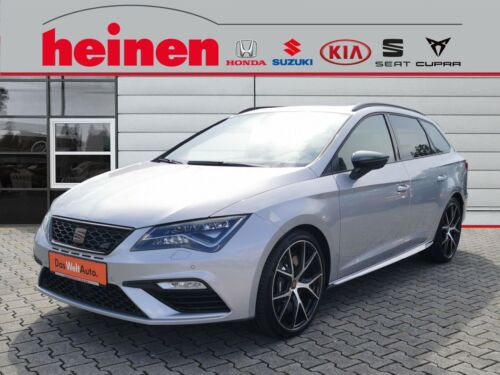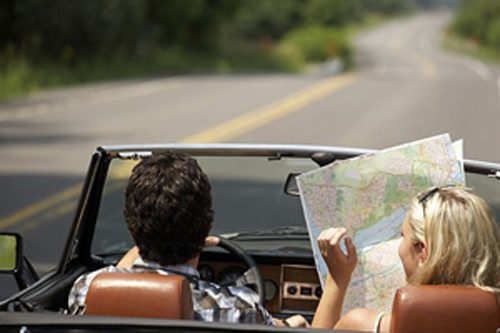
Seat Leon Leon Cup Cupra 2.0 TSI DSG
While the said metal is adorned with the property of good conductivity, Seat cars with the Cupra designation are characterized by the fact that they are a pleasure to transport with them. The Seat brand is known as the most temperamental of the Volkswagen Group. They are allowed to use most of the technology available in the concern, provided that they have sufficient freedom of action in developing and creating a brand image. A great combination, especially if they have lower prices than competitors inside the house. History has already given us many iconic sports and family caravans.
We will only mention the badges of the Volvo 850 T5 R and Audi RS2 Avant. Speed and ease of use. These two properties of yin and yang can be achieved separately in the automotive world, but they become more complicated when they need to be combined into one. That didn't stop Seat from trying to break the laws of the automotive universe, and so they put Cupra limousine technology into the body of a van 27 millimeters longer and 45 kilograms heavier. Is the combination of a two-liter turbocharged petrol engine, 290 “horsepower” and 587 liters of luggage right? While the wheelbase remains the same, this station wagon extension requires some agility. However, it is worth noting that 290 "horses" in no way can go unnoticed, so that it can be said that such a machine is just a slightly faster vehicle.
There, up to 1.500 rpm, the Cupra behaves like a sleepy teenager when he goes to school in the morning, and as soon as the turbine "grabs" him, he goes crazy to the very red field. One way or another, a typical problem arises here, when 290 "horses" have to be taken out on the road. Although the Cupra has an electronically controlled front differential lock, it has quite a few grip problems in the first two gears, especially on wet roads. Apparently, therefore, Seat did not dare to completely disable the stabilization system, which is not the most logical thing for sports cars. Despite the lack of traction on the drive wheels, such a machine provides tremendous cornering stability. If you opt for the Performance package, you put everything on an even higher notch with excellent Michelin tires on 19-inch orange rims and Brembo brakes. When we're not in the mood for racing fun, Cupra allows us to set quieter driving profiles.
Thus, we can adjust the responsiveness of the steering wheel and accelerator pedal, choose the appropriate damping stiffness and that soon such a Leon will become a very gentle machine for pampering children in the morning while singing Cat Muri. The inside of the Cupra is very similar to the regular Leon ST. A slightly different color combination and some emblems break the boredom of a rather simple interior. There is enough room for a family of four and even when the kids grow up, you shouldn't complain about the spaciousness in the back. The trunk is large, with useful boxes in the dead spots around the rails. When we lower the rear bench using a lever in the trunk, the volume increases to 1.470 liters, but unfortunately we don't get a completely flat bottom. It's hard to say that the Seat Leon Cupra ST will become an iconic sports caravan, but it's certainly a great compromise between sportiness and usability. For a little under $ 40, you get a car that you can use to break Nordic Loop records or just take your family with you on the road.
Саша Капетанович photo: фабрика
Seat Leon Leon Cup Cupra 2.0 TSI DSG
Basic data
| Base model price: | 29.787 € |
|---|---|
| Test model cost: | 33.279 € |
| Power: | 213kW (290 KM) |
Costs (per year)
Technical information
| engine: | 4-cylinder - 4-stroke - in-line - turbocharged petrol - displacement 1.984 cm3 - maximum power 213 kW (290 hp) at 5.900 rpm - maximum torque 350 Nm at 1.700 - 5.800 rpm. |
|---|---|
| Energy transfer: | front wheel drive engine - 6-speed DSG transmission - tires 235/35 R 19 Y (Bridgestone Potenza RE050A). |
| Capacity: | top speed 250 km/h - 0-100 km/h acceleration 5,9 s - average combined fuel consumption (ECE) 6,6 l/100 km, CO2 emissions 154 g/km. |
| Mass: | empty vehicle 1.466 kg - permissible gross weight 2.000 kg. |
| External dimensions: | length 4.535 mm – width 1.816 mm – height 1.454 mm – wheelbase 2.636 mm – trunk 585–1.470 55 l – fuel tank XNUMX l. |
Our measurements
| Measurement conditions: T = 17 ° C / p = 1.028 mbar / rel. vl. = 55% / odometer status: 4.223 km | |
| Acceleration 0-100km: | 6.2s |
|---|---|
| 402m from the city: | 14,4 years ( 159 km / h) |
| test consumption: | 10,2 l / 100km |
| Fuel consumption according to the standard scheme: | 7,2 l / 100km |
| Braking distance at 100 km / h: | 36,2m |
| AM table: | 40m |
| Noise at 90 km / h in 6rd gear | 59dB |
We praise and reproach
a compromise between sportiness and usability
capacity
price
low speed grip
barren interior
non-switchable ESP
